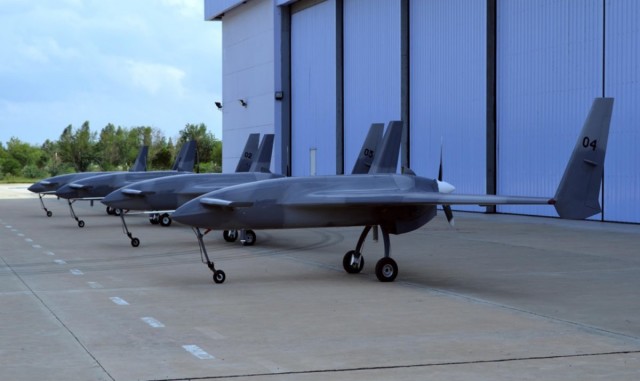Amid continuing clashes with ethnic rebels, Myanmar’s military is confirmed as having deployed unmanned combat aerial vehicles (UCAVs) for counter-insurgency operations in the north of the Southeast Asian country.
First inducted into the inventory of the Myanmar Air Force (Tatmadaw Lay) in 2013 or 2014, one or more Chinese-built CH-3A (Cai Hong 3A or Rainbow 3A) UCAVs have been undertaking sorties from an airfield likely to be either Lashio in Shan State or Bhamo in southeastern Kachin State.
Confirmation of earlier reports on an UCAV deployment to the northern theatre of operations has emerged in the form of a photograph likely to have been taken on a serviceman’s mobile telephone and posted on a Facebook account before being disseminated on the internet.
Myanmar is thought to operate around a dozen CH-3A drones. The CH-3A is a variant of the CH-3 fixed-wing unmanned combat aerial vehicle (UCAV), featuring a 180 kg maximum payload and an endurance of six hours. The CH-3A matches the CH-3 for range, at 960 kilometers. In terms of armaments, the CH-3A is capable of fielding AR-1 laser-guided air-to-surface missiles and YC-200 guided bombs.
The Myanmar Air Force’s combat aircraft backbone is composed nearly entirely of Chinese-built systems, in addition to 31 Russian MiG-29 multirole fighters. The Myanmar Air Force operates Chinese Nanchang Q-5 ground attack aircraft, primarily used in close air support roles, Chengdu J-7 fighters, Shenyang J-6 fighters, and is likely the first foreign buyer of the joint China-Pakistan JF-17 Thunder fighter. Myanmar also operates Chinese Y-8 medium lift transport aircraft.
While the CH-3A UCAVs are the most capable armed unmanned aerial system in Myanmar’s repertoire, the Myanmar Air Force also has 11 Sky-02A surveillance drones and 22 Yellow Cat A2s, which are domestic versions of the Chinese UAV.
Sources: IHS Jane’s 360, The Diplomat


